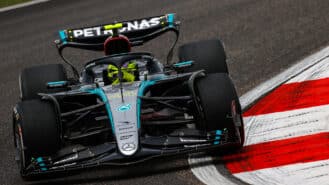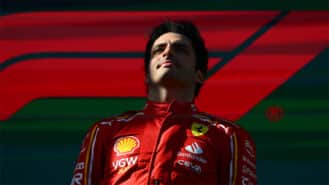
Hamilton moans earn him F1 highlights reel – Up/Down in China
The king of positive vibes has seen his crown slipping recently – a grey day in China only deepened the Silver Arrows' Slough of Despond
If the rumours are true, next week McLaren will unveil the successor to the F1, probably the most fabled and certainly the most valuable production supercar that has ever been made.
For now details of the new car are being kept under wraps ahead of its postulated Paris Motorshow reveal: through leaks official and unofficial, off the record briefings and advance teaser information we hacks usually know all there is to know about what’s going to be under the covers many weeks in advance. But not this time.
The replacement for the F1 is not just another car launch. After the F1 and the current MP4-12C and, if you must, the M6GT of which just three were made, this is only the fourth McLaren road car in the company’s history.
So what will it be? Specifications remain under wraps, but certain educated guesses can be made if, as seems likely, this really is a £1 million car to rival the Bugatti Veyron and the forthcoming Porsche 918 Spyder and whatever Ferrari’s going to call the next Enzo.
First the car is bound to have a carbon tub and body, just like the old F1 (the current 12C clads its carbon monocoque in aluminium panels) but the F1’s three seat design with a central driving position looks certain not to appear: optimal though it was from the point of weight distribution and visibility, it caused too many owners too many indignities getting in and out.
Like the 12C the engine will be built by Ricardo. As the current motor is of modular design, it would not be excessively problematic to create a V10 or V12 variant but I’m more interested to see whether McLaren chooses also to boost its output by using some form of hybrid power as will its rivals from Porsche and Ferrari. I think it entirely possible that the engine will be left in near standard 616bhp tune but with perhaps another 200bhp provided by a hybrid electric drive. If the result had 800bhp but weighed the same 1450kg as the 12C, that alone would provide a Bugatti-busting power to weight ratio. In fact I expect McLaren will actually do better on both sides of the equation.
But I’m far more interested in what it’s like to drive than how theoretically quick it might be in a straight line or around a track. If this car is to be the true successor to the F1, it must provide a seminal driving experience of which speed is but one component. Remember that the pursuit of sheer speed was so unimportant to Gordon Murray it was only when Autocar road tested the F1 in 1994 that they actually found out how fast it was, some six years after the idea first came to fruition.
If it has a hybrid drive, it must exist not simply to showcase the technology or, laughably, attempt to put forward some environmental foot. It must improve the driving experience; make the car somehow more enjoyable or accessible. Any other attempt to justify adding what will doubtless be considerable weight to such a car would be fatuous.
The car must also show that McLaren is capable of building a car that’s more than just an unprecedented achievement either in terms of its technology or speed. It must be the car McLaren uses to demonstrate it understands the subjective side of driving pleasure, that it can build a machine not just to boggle the brain, but capture the heart.
If it can do that, there is a strong chance this new McLaren will be both a landmark in supercar design and a worthy successor to the fabled F1.

The king of positive vibes has seen his crown slipping recently – a grey day in China only deepened the Silver Arrows' Slough of Despond

In the face of soul-destroying boredom, only one driver can bring the entertainment needed to rescue a sport which resembles a broken AI tribute to itself

Waking up at 4am on a Sunday is rarely worth it, especially when Max Verstappen looks poised to take another lights out to chequered flag victory — as he did…

Should there be a new prize for a team finishing sixth in the championship – just like the Jim Clark Trophy in the good old turbo times?